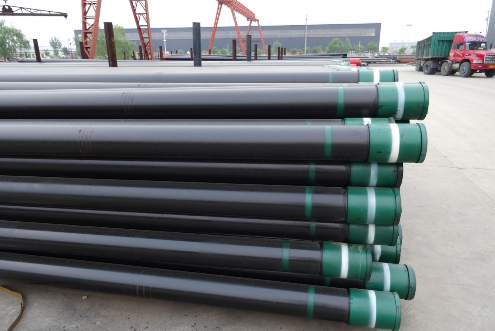
How to Solve the Deformation of Oil Casing Pipe?
Date:2024-01-05 keywords: casing deformation, casing pipe, causes of oil casing deformation
Oil casing pipe can deform for a variety of reasons, including mechanical stress during handling, improper installation, or temperature changes. Here are some steps to help troubleshoot and prevent oil casing deformation.
Proper Handling:
Handle casing pipes with care to avoid excessive mechanical stress and deformation during transportation and storage. Use proper lifting and handling equipment to minimize the risk of bending or warping.Storage Conditions:
Store casing pipes in a flat, horizontal position to prevent bending or sagging. If pipes are stored vertically, ensure proper support to prevent distortion under their own weight.
Inspection Before Installation:
Before installation, inspect each casing pipe for any signs of deformation, such as bending or warping. Do not install pipes that show visible deformities.

Proper Installation Techniques:
During installation, use proper techniques to ensure that the casing pipes are not subjected to excessive bending or stress. Follow industry standards and guidelines for casing pipe installation.
Controlled Welding Process:
If welding is involved in the installation process, ensure that the welding parameters are controlled to prevent localized heating that may lead to deformation. Proper welding techniques and procedures should be followed.
Prevention of Thermal Deformation:
Avoid exposing the casing pipes to extreme temperature variations, as this can lead to thermal deformation. If welding is required, allow the pipes to cool gradually to room temperature to minimize thermal stresses.
Post-Installation Inspection:
After installation, inspect the casing pipes again for any signs of deformation. Address any issues promptly to prevent further problems.
Use of Pipe Supports:
Provide adequate support to the casing pipes at intervals to prevent sagging or bending under their own weight. This is particularly important in vertical runs or areas where the pipes are not fully supported.
Avoid Overloading:
Do not subject the casing pipes to excessive loads or forces that can cause deformation. Consider the weight and pressure requirements of the specific application.
Quality Assurance:
Ensure that the casing pipes used meet industry standards and quality specifications. Using high-quality materials can reduce the risk of deformation.
If deformation has already occurred, consider the following corrective actions:
Straightening Techniques:
Depending on the extent of deformation, certain straightening techniques may be applied. However, this should be performed by professionals using specialized equipment to avoid further damage.
Replacement:
If the deformation is severe, it may be necessary to replace the deformed section or the entire casing pipe.
Go here to learn more about "Inspection of API 5CT Oil Casing Pipe"
- 【Prev】 : Carbon Steel Pipe Painting
- 【Next】 : What is ERW Steel Tube Used for?
News Update :
45° Short Radius Elbows and Long Radius Elbows...
©2017 Permanent Steel Manufacturing Co.,Ltd https://www.permanentsteel.com All Rights Reserved.
Terms of Sale|Privacy Policy


